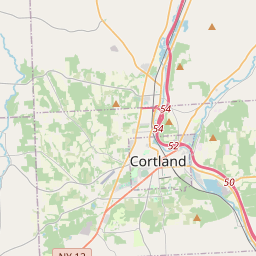Civil War Memorial
Historical marker location:






April 12, 1861: The Civil War begins with the Confederate attack on Fort Sumter, located in South Carolina's Charleston Harbor.
April 15, 1861: President Abraham Lincoln issues a call for 75,000 volunteers to serve in the Union Army to suppress the rebellion.
May 24, 1861: The first major land battle, known as the First Battle of Bull Run (or First Battle of Manassas), takes place in Virginia. It ends in Confederate victory.
September 17, 1862: The Battle of Antietam in Maryland becomes the bloodiest single-day battle in American history, with heavy casualties on both sides. The Union forces, commanded by General George McClellan, manage to halt Confederate General Robert E. Lee's advance into Union territory.
January 1, 1863: President Lincoln issues the Emancipation Proclamation, declaring that all slaves in Confederate-held territories are to be set free. However, the proclamation does not immediately free all slaves in the United States.
July 1-3, 1863: The Battle of Gettysburg in Pennsylvania takes place, resulting in a significant Union victory and inflicting heavy casualties on Confederate forces. It marks a turning point in the war.
November 19, 1863: President Lincoln delivers the Gettysburg Address, emphasizing the principles of liberty, equality, and the preservation of the Union.
April 9, 1865: General Robert E. Lee surrenders to Union General Ulysses S. Grant at Appomattox Court House in Virginia, effectively ending the Civil War.
April 14, 1865: President Lincoln is assassinated by John Wilkes Booth while attending a play at Ford's Theatre in Washington, D.C.
May 10, 1865: Confederate President Jefferson Davis is captured, signaling the collapse of the Confederate government.
December 6, 1865: The Thirteenth Amendment to the United States Constitution is ratified, officially abolishing slavery throughout the country.
While this timeline provides an overview of key events, it is important to note that the Civil War spanned over four years, from 1861 to 1865, and encompassed numerous battles, campaigns, and political developments that shaped the course of American history.
The first-ever recorded baseball game was played in Hoboken, New Jersey, but the modern rules of the game were established in New York City in 1845 by the New York Knickerbocker Baseball Club.
In the late 1700s, New England pioneers migrated to the region, attracted by the fertile land and the opportunity to establish farms. The town of Homer was founded in 1791 and became the first settlement in Cortland County. Other towns followed suit, such as Marathon, Cortlandville, and Virgil, as the population gradually increased.
The 19th century brought significant developments to the county. The construction of the Chenango Canal, which connected the Susquehanna River to the Erie Canal, provided an essential transportation route for goods and people. This sparked further economic growth and encouraged industrialization in the area. Several mills were established, including sawmills, gristmills, and textile mills, which contributed to the county's economy.
Cortland County also played a role in the abolitionist movement and the underground railroad. Many residents were active in the anti-slavery cause, and the county saw numerous fugitive slaves seeking freedom. The county's ties to the abolitionist movement continued during the Civil War, with many residents enlisting in the Union Army.
Today, Cortland County is known for its scenic landscapes, outdoor recreational activities, and educational institutions like SUNY Cortland. The county's history and heritage are preserved in its various museums and historical sites, offering visitors a glimpse into its fascinating past.
Cortland County Timeline
This timeline provides a condensed summary of the historical journey of Cortland County, New York.
- 1791 - Cortland County is created from part of Onondaga County.
- 1808 - The Village of Cortland is incorporated.
- 1823 - Cortland County Courthouse is constructed.
- 1848 - The first railroad reaches Cortland County.
- 1865 - The State Normal School, now SUNY Cortland, is established.
- 1860s - Cortland becomes an important center for manufacturing and commerce.
- 1890s - The economy shifts to focus on agriculture, dairy farming, and tobacco production.
- 1960s - Cortland County experiences significant growth and development.
- 2000s - Emphasis on tourism, outdoor recreation, and agriculture.